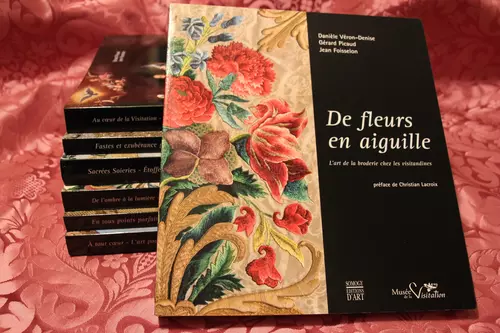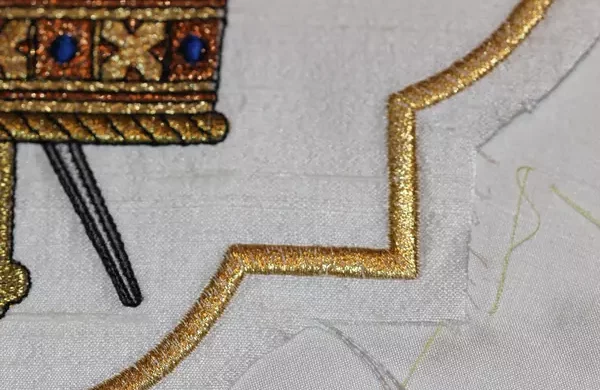
Pentecost Stoles
Red is the traditional color for use during the celebration of Pentecost, which comes fifty days after Easter, and 10 days after the Ascension of Christ.

Red is the traditional color for use during the celebration of Pentecost, which comes fifty days after Easter, and 10 days after the Ascension of Christ.

Lace, and variations is often applied to the hemline and sleeves of vestments such as a rochet which forms part of the choir robes. The lace can vary with styles of pattern, and materials, being sometimes a little heavier and bolder, to being something very light and airy.

Dice Trim,” has tiny alternating squares woven in a solid color and a gold thread. This trim, although narrow at 1/2″, is a powerhouse of a trim, it gives a clean, tailored look. It sews very nicely. It comes in a nice assortment of liturgical colors: black, red, green, blue, gold, white, and purple. Dice Braid offers a very clean, tailored, crisp finish to vestments. It can be used to edge the long sides of stoles or as an end finish to a stole. It can be used as a finish on the edge of a chalice veil, as well as being used on any other type of vestment where trim is needed.

The end can have fringe on the lower edge, or the edge can have a plain hem as the finish. Creative placement of trims and orphrey bands offer other options. One of my favorite ways to finish the end of a stole is to use tassels. The tassel choices for this current stole project are a soft white or cream tassel and a gold tassel.

The white base fabric and fabric for orphrey trims. Finishing trim: galloon trim, braid, fringe, tassels and other trims suitable for Church vestments

Making Priest or Pastor Stoles involves overcoming tricky parts. With Silk Shantung fabric, the challenge is its semi-transparency. To address this, underlining with unbleached muslin is presented. Orphrey size and placement are determined using the cutting table grid, following the design rule of “threes” for visual appeal. Now comes the tricky part: the lower edge of the stole. A geometry lesson and a protractor lead to marking angles and folding techniques, simplifying the process and making stole ends more enjoyable to finish.
The chasuble, known as the Westminster Vestment, is part of the heritage collection of Ushaw College, the former Catholic seminary at Ushaw Moor, near Durham.
An embellishment of the amice with embroidery is traditional, most often having a cross at the lower edge, or in the center of the back.

Ecclesiastical vestments are essential for clergy in both the Catholic and Lutheran traditions. Basic items include stoles in liturgical colors, cassock, alb, and surplice. A cincture is worn around the waist, while the amice is optional for Lutherans but essential in the Catholic faith. The chasuble, recommended for Lutheran pastors, matches basic stole colors. In LCMS, a tippet, a black stole variation, is used for prayer office in choir dress.

The altar linen project for King Richard III was spearheaded by Elizabeth Morgan who was contacted by Leicester Cathedral and coordinated the making of Fairlinens: palls, purificators, lavabo, corporals, and other linen items as needed for a new altar being installed in Leicester Cathedral for the service.

Making a choice of having all of the designs stitched in a quatrefoil frame…

The design worked in a quatrefoil border on silk dupioni, which will need to be applied to the base silk fabric….

With a growing collection of beautiful altar hangings, and hopefully, a growing collection of matching vestments, the issue of storage must be addressed to properly care of Ecclesiastical Vestments.

Visiting the Photo Galleries available on the Museum website offers a glimpse at many beautiful pieces of Ecclesiastical Embroider and Ecclesiastical Sewing. The orphrey on the cope in the above photo has some wonderful figure embroidery. The top figures are Mary (Mater Dei) and Joseph. St. Francis is on the lower right, but the watermark blocks the name of the final figure. The work is a very beautiful example of figure embroidery.

Applying the Ecclesiastical Machine Embroidery Design involves clipping corners, stitching, and turning the edge under. The motif is carefully stitched in place, ensuring a secure and neat attachment.
You must be logged in to post a comment.